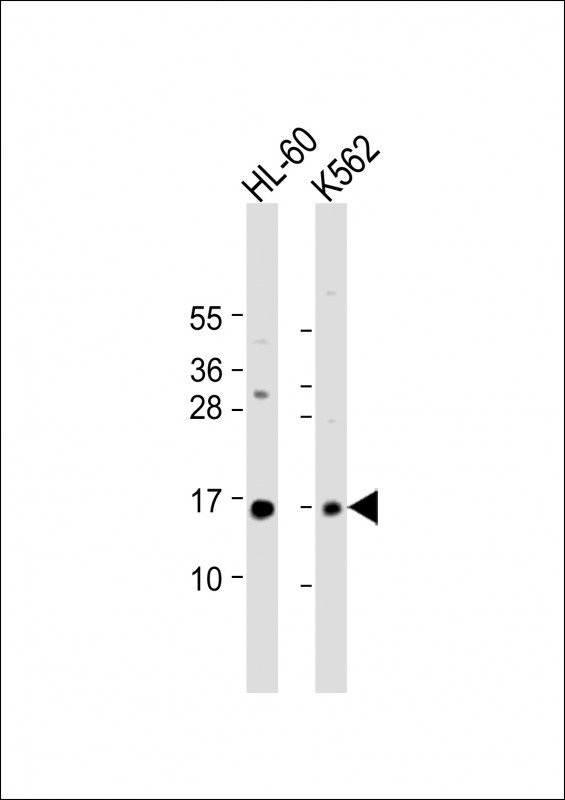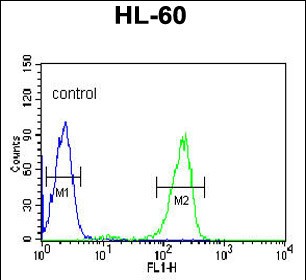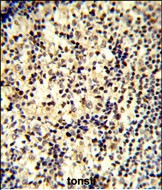Rabbit Polyclonal Antibody to SNRPD1
货号:
P33643
别名:
Small nuclear ribonucleoprotein Sm D1, Sm-D1, Sm-D autoantigen, snRNP core protein D1, SNRPD1
应用:
WB,IHC,FCM
反应种属:
Human
抗体类型:
Primary antibody
Swissprot:
P62314
规格:
目录价
在线咨询
Description |
|---|
SNRPD1 is a small nuclear ribonucleoprotein that belongs to the SNRNP core protein family. This protein may act as a charged protein scaffold to promote SNRNP assembly or strengthen SNRNP-SNRNP interactions through nonspecific electrostatic contacts with RNA. |
Specification |
|
|---|---|
| Aliases | Small nuclear ribonucleoprotein Sm D1, Sm-D1, Sm-D autoantigen, snRNP core protein D1, SNRPD1 |
| Entrez GeneID | 6632 |
| Swissprot | P62314 |
| WB Predicted band size | 13.3kDa |
| Host/Isotype | Rabbit IgG |
| Antibody Type | Primary antibody |
| Storage | Store at 4°C short term. Aliquot and store at -20°C long term. Avoid freeze/thaw cycles. |
| Species Reactivity | Human |
| Immunogen | This SNRPD1 antibody is generated from rabbits immunized with a KLH conjugated synthetic peptide between 69-98 amino acids from the C-terminal region of human SNRPD1. |
| Formulation | Purified antibody in PBS with 0.05% sodium azide,1%BSA and 50% glycerol.prepared by Saturated Ammonium Sulfate (SAS) . |
Application |
|
|---|---|
| WB | 1/1000 |
| IHC | 1/100-1/500 |
| FCM | 1/10-1/50 |
Product Image
-
All lanes : Anti-SNRPD1 Antibody (C-term) at 1:1000 dilution Lane 1: HL-60 whole cell lysate Lane 2: K562 whole cell lysate Lysates/proteins at 20 µg per lane. Secondary Goat Anti-Rabbit IgG, (H+L), Peroxidase conjugated at 1/10000 dilution. Predicted band size : 13 kDa Blocking/Dilution buffer: 5% NFDM/TBST.

-
SNRPD1 Antibody (C-term) (Cat. #P33643) flow cytometric analysis of HL-60 cells (right histogram) compared to a negative control cell (left histogram).FITC-conjugated goat-anti-rabbit secondary antibodies were used for the analysis.

-
Formalin-fixed and paraffin-embedded human tonsil tissue reacted with CSNK2B Antibody, which was peroxidase-conjugated to the secondary antibody, followed by DAB staining. This data demonstrates the use of this antibody for immunohistochemistry; clinical relevance has not been evaluated.







 鄂公网安备42018502007531号
鄂公网安备42018502007531号

